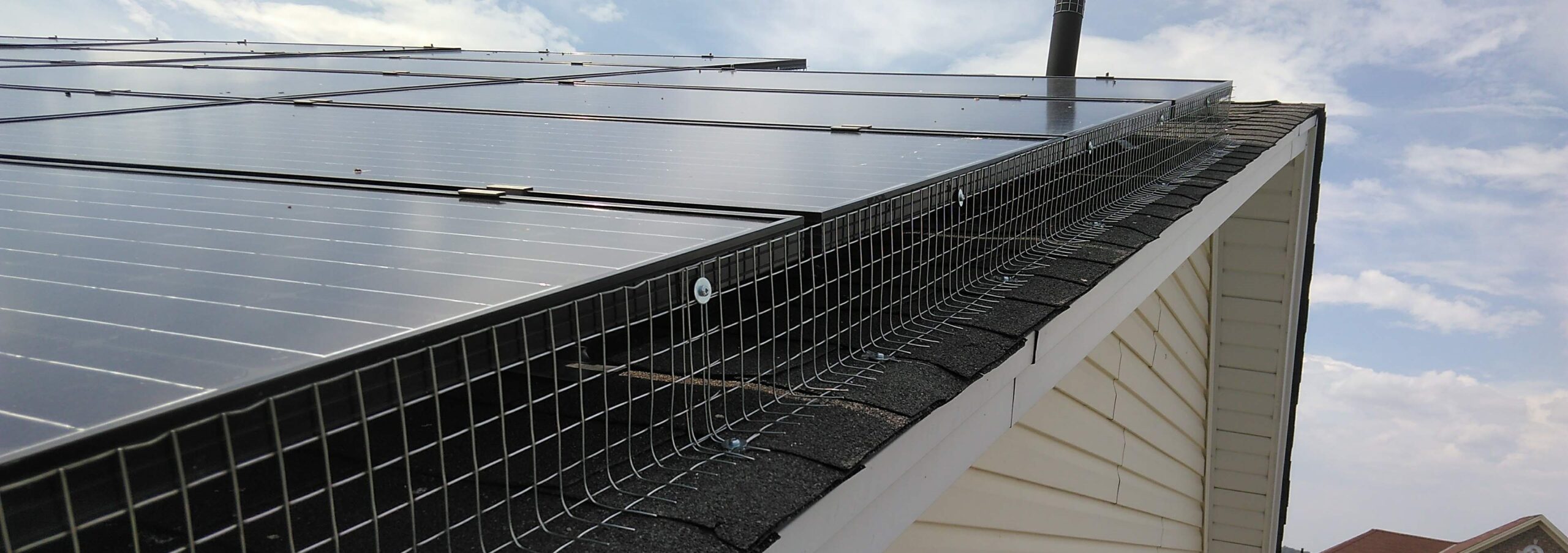Birds play a crucial role in our ecosystem, and their natural pest control capabilities often go under-appreciated. As stewards of wildlife in the Niagara region, we at Skedaddle Humane Wildlife Control have observed firsthand how birds as pest controllers create a more balanced environment. These winged allies work tirelessly to manage insect populations and protect gardens, farms, and natural landscapes from potential devastation.
While many people focus on the occasional challenges birds present when nesting in homes or businesses, we should also recognize their tremendous ecological benefits. Understanding this balance helps homeowners appreciate the value of birds while still addressing any issues they might cause around properties.
Let’s explore how these feathered friends serve as nature’s original pest management system and why their conservation matters for sustainable pest control.
Understanding Birds as Pest Controllers
Birds have been controlling pest populations for millions of years, long before humans developed chemical pesticides or other control methods. Their efficiency as natural pest control agents stems from their diverse feeding habits, mobility, and adaptability to different environments.
Many bird species consume hundreds to thousands of insects daily, making them incredibly effective in managing pest populations. For example, a single swallow can consume up to 1,000 flies per day, while a chickadee might eat up to 1,000 insects in a single day during the breeding season. This voracious appetite for insects helps keep pest populations in check naturally.
- Species specialization: Different bird species target different pest types. Warblers focus on caterpillars and small insects among foliage, while flycatchers expertly catch flying insects mid-air.
- Seasonal impact: During the breeding season, birds’ insect consumption increases dramatically as they feed growing hatchlings, creating a natural surge in pest control precisely when insect populations boom.
- Habitat versatility: Birds provide pest control across various environments—from forests and wetlands to urban gardens and farms around Niagara.
Beyond just eating insects, birds contribute to pest control through other mechanisms. They create fear responses in pest species, causing them to feed less and reproduce less successfully. This “ecology of fear” represents an additional way birds suppress pest populations without directly consuming them.
Bird Species That Excel at Pest Management
Different bird species have evolved specialized feeding strategies that make them particularly effective at controlling specific types of pests. Understanding which birds target which pests can help property owners appreciate their value.
Insect-Eating Champions
- Swallows and Martins: These aerial insectivores feed almost exclusively on flying insects, including mosquitoes, flies, and midges. A nesting pair of barn swallows can capture approximately 6,000-7,000 flying insects daily.
- Woodpeckers: These birds specialize in extracting insects from tree bark and wood, targeting damaging pests like emerald ash borers and bark beetles that can devastate forests.
- Chickadees and Nuthatches: These small birds are expert gleaners, picking insects and eggs from leaves and branches. They’re particularly valuable for controlling caterpillars, aphids, and scale insects.
Evidence of effectiveness: Research has shown that areas with diverse bird populations experience significantly less plant damage from insect pests. Studies in coffee plantations demonstrated that birds reduced insect damage by up to 70% compared to areas where birds were excluded.
Rodent Controllers
Birds of prey serve as vital controllers of rodent populations, providing natural pest control services for agricultural lands and communities:
- Owls: A single barn owl family can consume up to 3,000 rodents in a breeding season, making them invaluable for controlling mice and voles.
- Hawks: These daytime hunters patrol open areas and field edges, catching rodents that would otherwise damage crops or invade homes.
- Kestrels: North America’s smallest falcon specializes in hunting mice, voles, and large insects, providing multi-target pest control.
These natural predators help maintain ecological balance without the need for rodenticides, which can have unintended consequences for the food web.
The Economic Value of Bird Pest Control
Bird pest control benefits extend well beyond ecological health—they translate directly into economic advantages for farmers, homeowners, and communities.
Savings for Agriculture
Birds provide an estimated $5.4 billion worth of pest control services annually for agriculture in North America alone. This staggering figure reflects how effectively birds reduce the need for chemical pesticides and prevent crop losses.
Coffee protection: Birds that feed on the coffee berry borer—a devastating pest—save coffee farmers approximately $310 per hectare annually in avoided damage and reduced pesticide use. In Niagara’s agricultural community, similar benefits apply to vineyards and fruit orchards.
Reduced chemical inputs: Farms that maintain bird habitats typically require fewer pesticide applications, resulting in:
- Lower input costs for farmers
- Reduced environmental contamination
- Safer working conditions for farm workers
- Fewer pesticide residues on food products
Benefits for Homeowners
Homeowners in the Niagara region also benefit substantially from natural bird pest control:
- Garden protection: Insect-eating birds help protect vegetable gardens and ornamental plants from damage without chemical interventions.
- Mosquito reduction: Swallows, swifts, and nighthawks help reduce mosquito populations around properties, potentially improving outdoor enjoyment.
- Reduced need for pesticides: Properties with active bird populations often require fewer chemical treatments for insect control.
Creating Bird-Friendly Environments for Natural Pest Control
Encouraging beneficial birds to visit and stay on your property can create a sustainable pest management system. Here are practical ways to attract natural pest control birds to your Niagara property:
Habitat Enhancement Strategies
Food sources: Beyond feeders, focus on planting native species that produce natural foods:
- Native trees like oak, cherry, and dogwood provide both insects and berries
- Wildflowers attract insects that serve as food for birds
- Seed-bearing plants like coneflowers and sunflowers feed granivorous birds
Water features: Birds require reliable water sources for drinking and bathing. Consider installing:
- Bird baths with fresh water, changed regularly
- Small ponds or water features with shallow edges
- Moving water elements like drippers or bubblers to attract more species
Shelter and nesting sites: Different bird species have specific nesting requirements:
- Cavity nesters like chickadees and nuthatches use natural tree holes or nest boxes
- Tree and shrub nesters need dense vegetation for protection
- Ground nesters require undisturbed areas with appropriate cover
Landscaping for birds: The overall design of your property can significantly influence its attractiveness to beneficial birds:
- Create layers of vegetation from ground cover to canopy
- Maintain some areas with leaf litter where birds can forage for insects
- Include a mix of deciduous and evergreen plants for year-round shelter
Balancing Bird Presence With Property Protection
While we at Skedaddle appreciate birds’ contributions to pest control, we also understand that they can sometimes create challenges when nesting in inappropriate places. Striking the right balance is key.
When Birds Become Problematic
Birds nesting in vents, attics, or other structural areas can create safety hazards:
- Nesting materials can block ventilation systems and create fire risks
- Droppings can accumulate and pose health concerns
- Some birds may damage building materials over time
Humane Management Solutions
At Skedaddle, we approach bird management with the same humane principles we apply to all wildlife, focusing on:
- Prevention: Our technicians identify and secure potential entry points with appropriate screening and exclusion methods tailored to each situation.
- Humane removal: When removal is necessary, we ensure it’s done safely and with consideration for the birds’ breeding cycle, especially when juveniles are present.
- Alternative accommodation: In some cases, providing appropriate nesting structures away from the home can redirect birds to more suitable locations where they can continue providing pest control benefits.
- Long-term solutions: Our exclusion work is backed by a lifetime guarantee, ensuring that your property remains protected against future nesting issues.
If birds have become a problem on your property, trust Skedaddle Humane Wildlife Control in Niagara to provide professional and humane solutions. Contact us today to learn how we can help you strike the perfect balance between benefiting from birds’ natural pest control and protecting your home.




